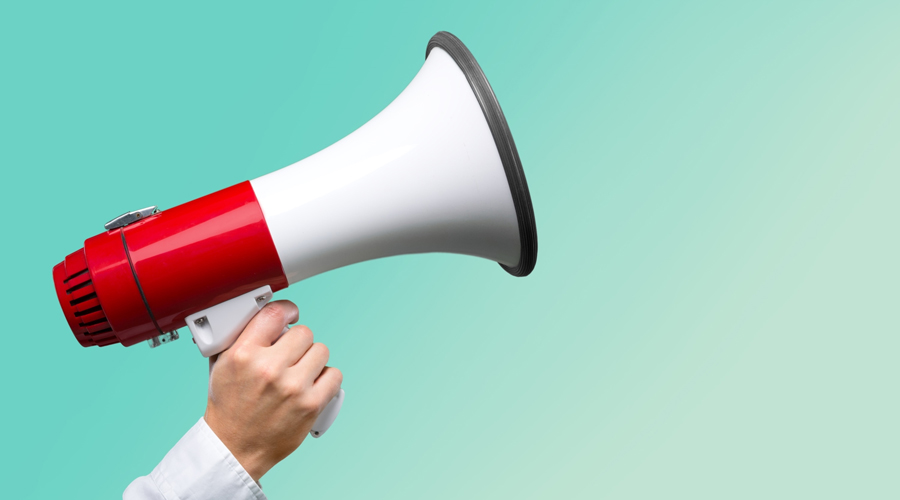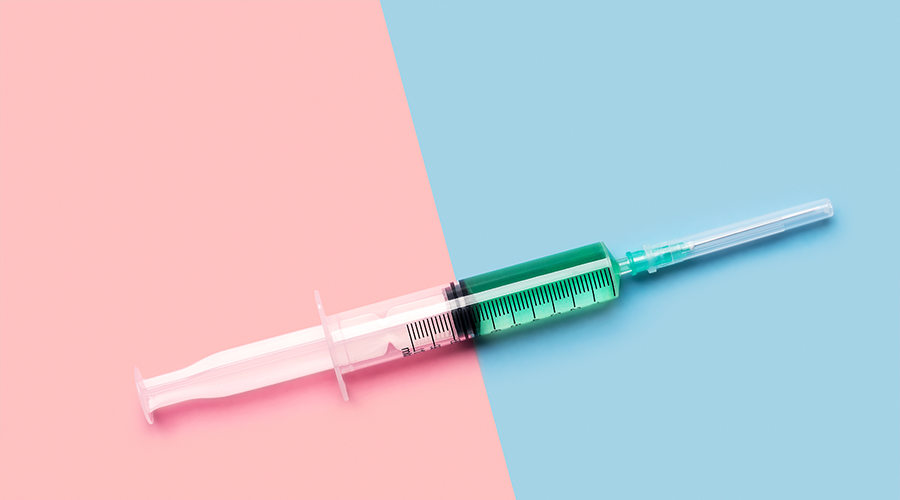For as long as people have been prescribed medications, medication adherence has been a struggle.
The National Community Pharmacists Association (NCPA) pointed out in its “Medical Adherence Report Card” that patients most likely to be non-compliant with their medication regimen are those who lack a strong relationship with their pharmacist. In fact, the survey detected one out of three patients over 40 with a chronic condition rated a D or an F when it came to taking their medications correctly.
The World Health Organization (WHO) suggests that patients are considered adherent if they take 80% of their prescribed medicines. Research shows that one-fourth of new prescriptions are never filled at all. And when they are filled, nearly half of patients with chronic conditions fail to take the medications as prescribed. This often leads to detrimental health outcomes such as more hospitalizations, higher healthcare costs, and even death.
Non-adherence also costs your pharmacy business. Remember: Every time your patient refuses to take medication, you lose revenue. And it’s not just a financial problem; it’s also physical.
“Our number one expense can be controlled by simply working on an adherence program. Patients who aren’t on an adherence program are typically those patients who take a lot of expensive medications,” said Tim Mitchell, RPh, Mitchell’s Drug Store. “So, there’s no sense in us ordering and keeping $50,000 to $60,000 of extra medicine on hand. We’re going to call them and say, ‘This is when your insulin is due,’ or ‘This is when your $1,500 medication is due,’ and then make a determination from there.”
The mortality rates among patients who don’t adhere to their medication are nearly double the rates of those who take their medications as prescribed. At least 125,000 preventable deaths every year can be attributed to non-adherence. On the other hand, good adherence is associated with a 21 percent reduction in long-term mortality risk.
“As we all know, staffing has been a challenge over the past couple of years with turnovers occurring in community pharmacy. But now that we’re able to staff accordingly, we can get our tasks done,” Mitchell said. “When we know we’re working on medication synchronization, which is about every day, I’d say probably 60 to 70 percent of our prescriptions are filled by 2 or 3 o’clock in the afternoon. After those are done, we start working on being more efficient with other things, such as calling patients for the following day or the next week.”
There isn’t a perfect solution to get patients to take their medicine. They fail to stay adherent for a variety of reasons, such as:
- Failing to refill
- Forgetting to take their medication (perhaps due to age or dementia)
- Multiple medications with confusing instructions
- Fears or confusion about the medication
- Medication costs they can’t afford
- Intolerable side effects
- Medications that make them feel worse
- Lack of transportation to a pharmacy to pick up refills
- Poorly educated on their medication or not at all
A medication adherence program is centered around patient education, proactive counseling, and overall synchronization. The goal is to improve patient medication use and reduce medication overuse or underuse.
Loyalty to a medication routine can have extensive impacts on the quality and length of your patients’ lives, their health outcomes, and overall healthcare costs.
“We use adherence programs as a foundation for clinical services,” said Lacy Epperson, PharmD, at Mitchell’s Drug Store. “Pharmacists are one of the most successful healthcare providers, and with that, it’s a way to best control our workflow. Whether it’s inventory management, employee staffing, clinical management, or overseeing a patient’s profile, I feel like that’s the most organized approach to taking the best care of the patient and the best care of the business.”
10 Methods to Maximize Medication Adherence
Medication therapy management (MTM)
The Medicare Modernization Act requires Medicare Part D prescription drug plans to include MTM services delivered by a qualified healthcare professional—especially pharmacists.
Although MTM can include many different services, just having a conversation about all of a patient’s medications and providing suggestions on how to manage them can go a long way to improving adherence. The hands-on help you provide is the most crucial benefit.
Medication synchronization
This is the most powerful of adherence strategies. Research has shown dramatic improvement in adherence when pharmacists employ a med sync program.
A study by the NCPA shows that patients who use these programs are:
- Five times more likely to be adherent to their medications
- 21 percent less likely to discontinue drug therapy
- Averaging more than 100 additional days on therapy per year
- 30 percent more likely to take their medication as prescribed
Med sync allows patients to pick up all of their ongoing prescription refills at the pharmacy on the same day each month. This makes it easier for patients to manage their medications and remember when to take them.
Appointment—based model
Carrying the majority of the load for medication adherence are MTM and med sync services. The use of scheduled monthly appointments makes them stand out even more. In an appointment-based model (ABM) adherence program, patients meet with you monthly. The appointment includes consultation and synchronization, but can also involve a lot more, such as the use of motivational interviewing to encourage patients to make healthy choices. For example, enrolling in further services at your pharmacy, such as immunizations or a diabetes prevention program.
Technology Solutions
Forgetfulness is a large reason for non-adherence. That’s why it’s so important to set reminders. Set them up via phone calls, mobile-app alerts, or automated text messages to remind your patients when it’s time to take or refill their medications. Plus, the reminders can be customized to the patient’s preferences.
Wearable devices also monitor medication adherence and provide feedback to patients and healthcare providers.
Here are some of the digital medication adherence systems available for both you and your patients:
- Pillpack: A medication delivery service that provides presorted doses of medications in individual packets and delivers to customers.
- Mango Health: A mobile app that allows users to manage their medication regimen and track their health.
- Digital Pharmacist: Provides digital solutions for independent pharmacies including a branded app, digital refills, communications, and engagement tools.
- Surescripts: An app that supports standard electronic prescription transactions to pharmacists to securely e-prescribe within their existing workflow.
- Medisafe: This app sets medication reminders, tracks your progress, and alerts the user for potential drug interactions.
- AdhereTech: A smart pill bottle that helps patients manage their medication regimen.
- MedMinder: A smart pill dispenser that tracks medication adherence and provides alerts.
- 8. CareZone: This mobile app is for medication regimen tracking, setting reminders, important health information, symptom checker, and a directory of healthcare providers.
- Reminder Rosie: This medication management system consists of a voice-enabled alarm clock and mobile app.
- Pillboxie: This mobile app allows patients to track their medication regimen, set reminders for taking medications, and receive alerts about their medication adherence. It also provides drug information.
“We’ve got patients in different demographics who love our rapid packs,” said Epperson. “Our rapid-pack machine is very efficient and that’s a big part of our adherence program.
I like to think of our adherence program in three layers. In step one, you have your regular med-sync patients. At the Community Pharmacy Enhanced Services Network (CPESN) level, we’re using the term ‘care sync’ because we’re not just looking at their medicines. There’s a lot that we’re doing for the patient during that monthly touch point. Once we have care-sync patients all taken care of and we’ve got them regimented, step two is our adherence packaging. So, for us that’s going to be our rapid pack. Step three is our Medical at Home program.”
Convenience
Make it as easy as possible for your patients to take their medication. If you decide not to go with a med sync program, offer adherence packaging.
Partner with a company that creates blister packs for patients with chronic conditions or patients who manage multiple medications. Want to go the extra mile? Invest in smart blister packs. That way, your patients can keep track of the medications they’ve already taken and those they still need to take. Blister packs are beneficial for those who find it difficult to read small print or have vision problems. Many packs have large, easy-to-read labels and are color coded.
This helps your patients identify their medication. Plus, blister packs have symbols near each cavity that indicate the time of day it should be taken.
All your patients have to do is puncture the backing on the compartments to access their medications. For those with dexterity issues or arthritis, many backings are perforated.
Blister packs reduce the risk of medication errors and reinforce prescribed medication regimens. They also reduce the likelihood of patients double dosing, missing a dose, or taking the wrong dose.
If you want to go further, you can invest in smart blister packaging like the Med-ic® Electronic Compliance Monitor (ECM). It monitors patients’ adherence by tracking when they open each dose. That way, they stay on track with their medications.
Along with blister packs, you can improve convenience by offering delivery service. Studies show that home delivery increases patients’ adherence, especially for those with chronic conditions.
Swallowing Issues
Your patients who have a hard time swallowing pills aren’t alone. Nearly 40 percent of people struggle to get their medications down, which causes adherence issues. Patients may delay taking their medication. They might skip the dose or even quit taking the medication all together.
Help your patients swallow their pills and continue taking their meds as directed with these tactics:
- Teach them proper head posture
- Stock products to aid swallowing
- Explain the pill-taking process
- Teach breathing exercises
- Suggest placing pills in tasty treats
Education
Patients stop taking medications for numerous reasons. Whether they’re tired of taking them, don’t like side effects, or just can’t remember to take them, educating them will help solve any issues they may have.
First, make sure your patients understand how to take their pills as directed. ABM and MTM are effective for this type of counseling. Then, make sure patients understand the health consequences of missing doses.
If you haven’t already, make information on diabetes, high cholesterol, and hypertension readily available. You might even consider offering wellness classes for further education or sending patient education videos through text message. Your patients will then have access to information about their prescriptions available on demand.
The health benefits of the drug outweigh the side effects, so remind your patients why they’re taking the medication. If they still have concerns about the risks, encourage them to speak with their physician.
Delivery Service
More and more online and mail-order pharmacies keep popping up. Because of that, delivery options have become more of an expectation for patients. But without that convenience, patients are more likely to become non-adherent because getting their medications is more of a hassle.
“It’s time to make some changes,” Mitchell said. “If you’re not sure what to do, reach out to a colleague or a consulting company. Reach out to whomever can help you move forward. Don’t sit around and wait for things to change. Make those changes now. It’s important that we take pharmacy back into our hands.”
Did You Know?
- More than 1 in 5 new prescriptions go unfulfilled.
- At least 125,000 Americans die annually due to poor medication adherence.
- 50 percent of people taking a chronic medication stop taking it in the first year.
- Half of patients do not take their medications as prescribed.
- Poor medication adherence costs the U.S. $100 billion per year in hospital admissions.
(Source: unchealthcare.org)
Five Ways to Benefit from Medication Adherence Solutions
Having the ability to automate manual processes to work as efficiently as possible is probably one of the greatest benefits of using advanced technology in your pharmacy. By automating dispensing workflows with a medication synchronization program, you can free up more time to spend with your patients. And with built-in care alerts, it’s easy for you to target patients who need intervention counseling to improve their medication adherence.
Improved Outcomes:
When patients take their medication as prescribed, they’re much more likely to notice positive treatment results. Adherent patients are also more likely to engage proactively in their own health.
When you have the right technology, you can implement a med sync program that will improve both adherence and your profits. Your pharmacy and patients will be healthier as a result.
Pharmacy Revenue Boost:
With fewer missed refills and a consistent prescription volume, med sync programs help increase your pharmacy revenue and spark profitability. With higher medication adherence rates, it’s easier for you to predict your weekly and monthly flow of cash since refills are filled consistently each month.
Better Clinical Care Services:
Often included with medication adherence solutions are features that allow you to offer enhanced clinical care services. A lot of the medication adherence solutions available today give much-needed support for many clinical care services, including:
- Immunizations/flu shots
- Point-of-care testing
- Durable medical equipment
- Medication therapy management
- Chronic disease management
Higher Quality Scores:
Because quality scores are now directly tied to reimbursement, there’s a significant financial motivation to improve medication adherence rates.
From the Magazine
This article was published in our quarterly print magazine, which covers relevant topics in greater depth featuring leading experts in the industry. Subscribe to receive the quarterly print issue in your mailbox. All registered independent pharmacies in the U.S. are eligible to receive a free subscription.
More articles from the September 2023 issue:
- All Eyes on EG.5.1
- Your Extraordinary Front End
- Hearing Aids vs. PSAPs
- AI Chatbots in Health Care
- DSCSA Deadline Looming
- Unsalable Products
- DIR Rule Changes
- Medication Adherence Programs
A Member-Owned Company Serving Independent Pharmacies
PBA Health is dedicated to helping independent pharmacies reach their full potential on the buy-side of their business. Founded and run by pharmacists, PBA Health serves independent pharmacies with group purchasing services, wholesaler contract negotiations, proprietary purchasing tools, and more.
An HDA member, PBA Health operates its own NABP-accredited warehouse with more than 6,000 SKUs, including brands, generics, narcotics CII-CV, cold-storage products, and over-the-counter (OTC) products — offering the lowest prices in the secondary market.












